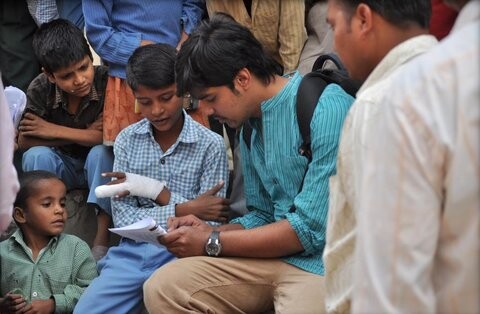Pratham’s Literacy Assessment Featured in The New York Times

“India’s scientists and engineers are dominant in global technology, medicine and other fields. Yet 40% of its third graders can’t read words.”
This is the astonishing issue highlighted by Pulitzer Prize-winning author Tina Rosenberg, bringing to light the paradox of India’s education system. Her New York Times article, “In India, Revealing the Children Left Behind,” explains that although school enrollment is at 96%, many of those students are not actually learning.
We know this through the hard data collected by Pratham’s Annual Status of Education Report (ASER), the largest non-governmental measure of learning, which surveys children’s reading and math skills using a one-page sheet for each subject. Rosenberg’s article shows sample tests as well as heartbreaking ASER results from 2013.
Making Learning Visible
ASER volunteers don’t go into the schools; instead they visit a sampling of homes in every rural district in India, capturing a large percentage of children who don’t make it to the classroom. The survey becomes an ongoing dialogue with the community, as volunteers engage parents, teachers and neighbors in the process.
“This might be the first time parents really observe what their kids can and can’t do,” says Ruth Levine, director of global development and population programs at The Hewlett Foundation, a major Pratham supporter. “It’s the quintessential teachable moment. Parents are observing their children unable to correctly read a simple sentence. Volunteers are trained to start a conversation about what can be done.”
Rosenberg also talks about how Pratham’s Read India program works to address India’s literacy crisis through our innovative methods of tailoring fun, interactive lessons (instead of the usual rote memorization) to a child’s ability rather than his age.
“…teachers set aside the last hour or 90 minutes of the day to use Pratham’s methods. The same teachers who were getting zero results with their normal methods saw big gains when they grouped children by level and worked on basic skills.”
Read the full article. Learn more about Pratham’s literacy and learning programs.
